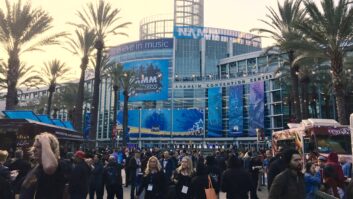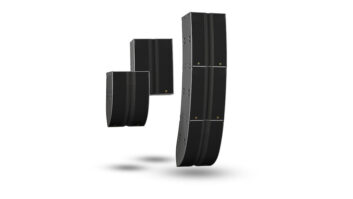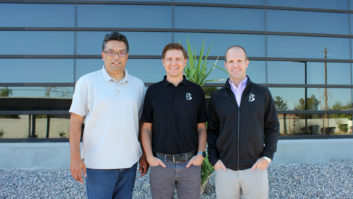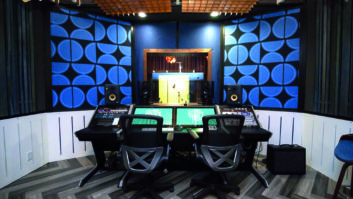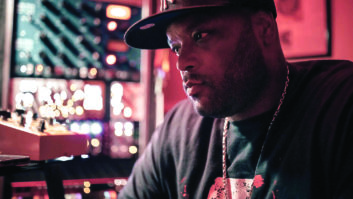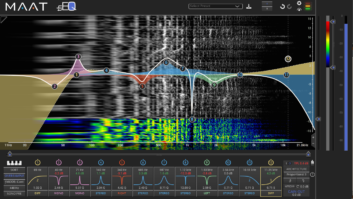Studio designers have been busy this past year, some of them crazy busy, and I don’t think many expected to be. Last year at this time, when putting together the Class of 2020 issue, we had a wealth of submissions and showcased a wide range of facilities. It was a typical year, even a good year for studio design and build, both commercial and private. But it was also about six weeks into the global shutdown, and the near future looked rather bleak regarding “new studios.”
For studio clients and studio designers alike, uncertainty instantly became part of the daily wakeup call, as projects were immediately put on hold, protocols were put in place, states adopted different rules leading to aggravating red tape, supply chains were interrupted, budgets froze, and warehouses around the world had either been emptied out or were stuck with excess inventory.
Nobody was thinking about new construction, at least not that first month or two. Most people were still learning the intricacies of Zoom vs. Teams vs. Meet and wondering whether they would need a better camera for the home office, along with a decent set of headphones and maybe a microphone. A larger monitor, too. And definitely premium Wi-Fi. Have to have solid Wi-Fi. Apply for the PPP loan to keep things going. Now try to figure out how this is going to work. How quickly we forget that first month or two.
Then there was an abrupt turn, and while the rest of the workforce was settling in at home, architects, acousticians, contractors, systems integrators, network techs, electricians and all the associated trades were inundated with jobs. Reports started coming out in late Spring that large-scale public and civic projects that had been put on hold—from educational institutions to municipal buildings—were back on. With the public out of the way, it seems, timetables could be accelerated and projects could be fast-tracked. Mix sister publications Sound & Video Contractor and Systems Contractor News have been charting the boom all year long. It doesn’t seem to be slowing down.
At the same time, another of the Future publications, Residential Systems, which covers audio/video integration in the luxury and smart home markets, experienced the same “first-month lull followed by yearlong boom” as its commercial counterpart. The biggest problem right now for audio/video integrators in the high-end home market, it seems, is that they are woefully lacking seasoned techs on the job site.
The surge in demand for connected technologies across audio, video, lighting, home cinema, security, distributed media, even curtains and drapes, is so high right now that it’s the Wild West, with new products and new approaches to existing product integration appearing with nearly every new project. There have been boom and bust cycles before in commercial and residential design, but none like this. The synergies between the workplace, wherever that might be, and the home are more intertwined than ever before.
Of course, this interplay between the home (the listening experience) and the office (the studio), has been a part of professional audio for decades, since before Rudy Van Gelder first set up in his garage and invited Les Paul over. Way before the ADAT and the first DAWs. This time, however, the technologies are coming from tech, video, data networking, and all kinds of different directions—then blending in all kinds of ways, and the designs of the future are taking shape right in front of us, in real time, with remote collaboration as part of the equation.
Hidden inside this month’s story with the talented composer Lili Haydn is the fact that she had just moved into a new house when the shutdown hit, so she and her partner quickly put in a Dante network to take full advantage of the whole-house environment. Rob Jaczko, chair of the Music Production & Engineering Department at Berklee College of Music, suddenly found himself without access to the school’s studios and quickly turned to new small-room-acoustics software from REDIacoustics to bring the necessary level of professionalism home. Clear-Com looked at the challenges faced by film and television productions during the pandemic, and introduced protocol guides and AoIP communications technologies simultaneously. Each of these moves, brought on by the pandemic, is now part of Lili’s, Rob’s and Clear-Com’s design for the future.
And please take the time to look over our annual photo feature of new studios, the Class of 2021. We have 21 amazing new rooms from the world’s top studio designers, and there were a whole lot more that were on the verge of completion but had been held up for various reasons. That’s good news for the professional audio industry, as a wise man once told me, “If you want to look ahead to the next five years of recording, talk to the studio designers.”
With the anxieties and uncertainties starting to peel back just a bit, it’s important that we all make sure that we’re designing for the future.
